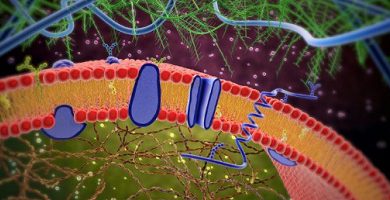What is a biological community?
We explain what a community in biology, examples and characteristics is. What is individual and species, community and population.
-
What is a biological community?
In biology , there is talk of community or biological community, but also of ecological community, biotic community or biocenosis, to refer to the total set of organisms of different species that coexist and interrelate in the same biotope or habitat, in which they find the environmental conditions to ensure their survival.
In other words, it is a group of different populations that share life in a geographical region and influenced by physical environmental elements such as temperature , humidity, the amount of sunlight , etc. Biological communities can be found in the most diverse and hidden habitats, since life on the planet is very widespread and adapted to each environment, even when it comes to microorganisms in the intestine of another animal .
That said, biological communities can be of different types:
- Phytocenosis The set of plant species of a habitat;
- Zoocenosis The set of animal species of a habitat;
- Microbiocenosis The set of microorganisms of a habitat.
You can also talk about agrobiocenosis to refer to the animal and plant populations of the cultivable field, as in the farms created by our species.
-
Example of biological community

A perfect example of a biological community can be found in a garden . In it we can identify various plant populations: grass, floral shrubs, perhaps a couple of fruit trees, along with fungal populations and animal populations: ants, earthworms, slugs, beetles, birds and surely some cat. Each different species of being alive makes up a specific population, and their life together makes up the garden community.
Among these species there will be interspecific relationships: the ants feed on the remains of dead animals, the slugs of the leaves of the plants, while the beetles of the floral nectar, and the birds, in turn, of the beetles, of the worms of dirt and slugs. It is even possible that the cat feeds on the birds, becoming the final predator of this small community.
If we add to our example the amount of light that plants receive, the specific climate of our region of the city and other geographical details regarding where the garden is located, we can expand our perspective and talk about an ecosystem.
-
Characteristics of a biological community

Biological communities are, first of all, composed of populations . Each population restricted to a species, that is, to a number of individuals capable of reproducing each other and sharing geographic habitat, also referred to as a biotope.
In that sense, in the same community there will be animal, plant populations, etc. , and among them various types of interactions will occur, that is, interspecific relationships. The latter, in addition, will dictate the trophic chains of each community and at the same time the ecological niche of each species, that is, the specific type of relationships that it maintains with the others.
Thus, communities are largely determined by the number of species that inhabit it (its biodiversity ), by the number of individuals that make up each given population (its abundance), and the ability of a community to return to normal once overcome risk situations , such as drought or fire.
The consideration of a community and its physical environment results in an ecosystem.
-
Individual and species
Every living being that exists, be it vegetable, animal, fungus or microbe, is an individual endowed with a unique and unrepeatable life , endowed with a unique genetic code and basic needs of the whole individual. But at the same time it is part of a much larger group of individuals who share with it many of its biological, genetic characteristics and that could (at least in cases where there is sexual reproduction) reproduce with it. This larger group is called the species.
The species share an evolutionary origin and are perpetuated over time through the reproduction of their individuals, conserving their genetic legacy while introducing minimal variations or adaptations that allow them to stay alive in the environment that touches them in luck. This process is known as adaptation and in radical cases it can cause radical changes in the genotype that start a new species, in a process called speciation and that is essential to understand the evolution of life, just as Charles Darwin He understood in his work The Origin of Species .
The mixture, if possible, of individuals of nearby but distinct species yields hybrid individuals, which may contain characteristics of both species but are always sterile. This is the case of the mule, for example, hybrid between horse and donkey.
-
Community and population
Biological populations are the sets of individuals of the same species that share the same habitat and tend to reproduce among themselves. There are different types of populations (gregarious, family, colony, etc.) but their individuals always share fundamental biological characteristics.
On the other hand, a community is determined by the set of different populations that live in the same habitat. That is, for the sum of the different species that interrelate in the same habitat, forming a trophic chain and competing for the continuity of their species.




